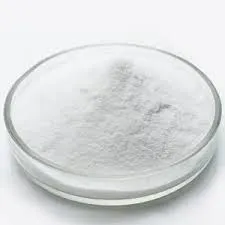
Nov . 15, 2024 03:36 Back to list
hydroxy ethyl cellulose uses
The Versatile Uses of Hydroxyethyl Cellulose
Hydroxyethyl cellulose (HEC) is a non-ionic water-soluble polymer derived from cellulose, which has found widespread applications in various industries due to its unique properties. These properties include high viscosity, thermal stability, and excellent film-forming capability. In this article, we will explore the diverse uses of hydroxyethyl cellulose across different sectors including pharmaceuticals, cosmetics, food, and construction.
Pharmaceutical Applications
In the pharmaceutical industry, hydroxyethyl cellulose serves as a crucial excipient in drug formulations. Its ability to form gels and increase viscosity makes it an ideal thickening agent for topical ointments and creams. It helps to stabilize emulsions and suspensions, ensuring that the active ingredients remain evenly distributed. Additionally, HEC is used as a binder in tablets, enhancing the mechanical properties of the formulation. With its non-toxic nature, hydroxyethyl cellulose is safe for use in various pharmaceutical products, which further underscores its importance in this sector.
Cosmetic and Personal Care Products
Hydroxyethyl cellulose is a popular ingredient in cosmetics and personal care products due to its thickening and binding properties. It is commonly found in lotions, shampoos, facial cleansers, and other skin care items. In these formulations, HEC not only improves the texture and feel but also enhances the stability of the product by preventing phase separation. The presence of hydroxyethyl cellulose helps to create a smooth and luxurious feel on the skin, making it a favored choice among formulators in the cosmetics industry. Furthermore, it can also act as a film-forming agent, providing moisture retention while protecting the skin.
Food Industry
hydroxy ethyl cellulose uses

In the food sector, hydroxyethyl cellulose is used as a thickening agent, stabilizer, and emulsifier. It is commonly found in various processed foods, including sauces, dressings, and desserts. HEC helps to improve the texture and mouthfeel of these products while extending their shelf life. Additionally, it can enhance the moisture retention of baked goods, preventing staleness and improving consumer satisfaction. As a safe food additive, hydroxyethyl cellulose is often classified as GRAS (Generally Recognized As Safe) by regulatory authorities, making it suitable for a broad range of culinary applications.
Construction and Building Materials
The construction industry has also embraced hydroxyethyl cellulose for its exceptional functional properties. HEC is frequently used in cement-based materials as a water-retaining agent and thickener. When added to cement or mortar, it enhances workability and improves adhesion, allowing for better application and performance of the materials. Furthermore, HEC helps to reduce cracking and bleeding, promoting the durability of the final product. Its energy-saving characteristics during the drying process make it an environmentally friendly choice for builders and contractors.
Other Industrial Uses
Beyond the aforementioned sectors, hydroxyethyl cellulose finds uses in various other industries. It serves as a dispersant in inks, coatings, and adhesives, providing improved flow properties and stability. In agriculture, it is used as a soil conditioner and as a component in controlled-release fertilizers. Furthermore, HEC’s film-forming properties are exploited in the production of biodegradable films and coatings, thereby contributing to sustainable practices.
Conclusion
The versatility of hydroxyethyl cellulose across different industries highlights its significance as a multifunctional ingredient. Whether in pharmaceuticals, cosmetics, food, construction, or other industrial applications, HEC continues to be a valuable asset due to its unique properties. As the demand for eco-friendly and efficient products increases, the role of hydroxyethyl cellulose is likely to expand further, reinforcing its position as a key material in innovation and development. Its ability to enhance product performance while maintaining safety standards ensures that hydroxyethyl cellulose will remain a prominent component in various formulations for years to come.
-
Why HPMC is a Key Additive in Wall Putty Formulations
NewsAug.05,2025
-
Redispersible Powder in Decorative Renders: Function Meets Finish
NewsAug.05,2025
-
Redispersible Powder for Interior Wall Putty: Smooth Results Every Time
NewsAug.05,2025
-
HPMC’s Water Retention Capacity in Dry Mortar Applications
NewsAug.05,2025
-
HPMC Factory Contributions to Liquid Detergents
NewsAug.05,2025
-
How HPMC Factory Products Change Detergent Textures
NewsAug.05,2025







